The Cellular Deception: Part II - The Silent Casualties of a Flawed Paradigm
How Germ Theory's dominance creates cascading consequences in healthcare, society, and consciousness—and why reclaiming our direct perception may be the only way forward
This essay is Part II of a five-part series examining the invalidity of Germ Theory and its far-reaching consequences. If you've arrived at this post directly, I strongly encourage you to begin with the Introduction, which establishes the foundational premises and structure for the entire exploration. Each part builds upon the previous, creating a comprehensive framework that reveals how our acceptance of flawed paradigms shapes our understanding of health, disease, and our relationship with the natural world.
A Brief Reminder of Our Journey So Far
In our first exploration, we uncovered how the Germ Theory paradigm both stems from and reinforces humanity's fundamental disconnection from natural wholeness. This paradigm isn't simply a scientific model, it's a reflection of a profound shift in human consciousness.
About two centuries ago, humanity began moving away from its intuitive, sensory connection with the natural world. As we lost our ability to perceive wholeness directly, we gained expanded analytical capabilities but sacrificed our inherent understanding of interconnectedness. This shift wasn't merely philosophical—it transformed how we relate to everything, including our own bodies.
The microscope gave us access to an invisible realm, but we viewed this new territory through the lens of our increasingly mechanical, fragmented mindset. Rather than seeing microorganisms as part of a dynamic ecosystem, our analytical minds quickly labeled them as "good" or "bad" based on surface observations. We projected strategic intentions onto non-sentient particles, creating a narrative of attack and defense that matched our growing separation from holistic understanding.
Ironically, our technological progress deepened this misperception. Each new discovery was filtered through our fragmentary consciousness, creating a self-reinforcing cycle: our disconnected mindset shaped how we interpreted evidence, and these interpretations further entrenched our disconnection.
In this second exploration, we will examine the devastating consequences that emerge from maintaining the Germ Theory paradigm despite mounting contradictory evidence. We'll uncover how this flawed foundation has created cascading effects throughout healthcare, social structures, and our psychological well-being—detrimental consequences that remain invisible until we step outside the paradigm itself.
Anthropomorphism and Contradiction: Coping Mechanisms for a Flawed Paradigm
When a scientific paradigm is built on shaky foundations, it requires mental defense mechanisms to conceal its logical gaps.
In other words, Germ theory has spawned two dangerous phenomena: excessive anthropomorphism and the ad-hoc answer mentality which in their totality have led to the acceptance of logical contradictions. Both reflect the same fundamental problem—when reality fails to match theory, rather than revising the theory, we distort our interpretation of reality.
Consider the standard description of viral infection: Viruses (despite having no means of locomotion) somehow enter the bloodstream and (despite having no sense organs) are able to detect and recognize living cells. They must then force their way in through the cell membrane (even though they have no means of generating the energy to do so), navigate to the nucleus (even though they have no means of detecting it) and then (even though they have no method of communication) persuade the cell to disassemble its internal organs and reassemble them into exact copies of the virus.
The logical contradictions are glaring: How can unconscious particles "know" when they're harmful versus beneficial? How, among 40,000 different viral species in the human gut alone, some are categorized as "good" and others as "bad"? And why are these same particles, when described in the context of the evolution of life, are revered as "vital components of evolution"?
This anthropomorphism isn't mere rhetorical flourish—it's a necessary mechanism to bridge enormous conceptual gaps in the paradigm. When we say viruses “jump from person to person,” “there are good bacteria and bad bacteria,” or that “we've been in competition with viruses for thousands of years,” we're tacitly acknowledging our theory's inadequacy and its dependence on metaphorical support.
The relentless habit of anthropomorphism in science has created a double-edged sword with potentially destructive consequences. While anthropomorphizing can effectively communicate complex concepts, it becomes fundamentally problematic when investigating the underlying mechanisms of observed phenomena.
Mathematical formulas stand independently without requiring human-like attributes. Computer code compiles correctly without anthropomorphic explanations. Similarly, in biological systems, until we discover definitive formulas that describe phenomena accurately, anthropomorphism serves merely as a conceptual crutch that cannot bridge fundamental knowledge gaps.
This problem cascades throughout scientific inquiry. Without precise definitions, we cannot develop rigorous methodologies. Without rigorous methodologies, all derivative applications lack specificity and value. The absence of clear formulas explaining contagion mechanisms forces us to rely on anthropomorphic descriptions that actively prevent us from discovering the true underlying patterns—the solid foundation necessary for developing effective interventions.
Reality reflects this failure clearly. Humanity has never successfully eradicated or "defeated" any epidemic (from the perspective of natural laws, such an outcome is neither sustainable nor should it be). Contact-based contagion itself remains unproven—a fact that fundamentally undermines the prevailing paradigm.
Scientists' inability to address these gaps has perpetuated this harmful habit, hijacking our cognitive capabilities and reducing them to delusion. This practice effectively releases scientists from their highest responsibility: discovering the consistent, fundamental patterns that govern reality.
The Ad-Hoc Culture: Evading Intellectual Responsibility
As a result of such definitional ambiguity, we get an ad-hoc explanations culture that enables logical contradictions.
The COVID crisis laid this bare: public health authorities and the scientific establishment simultaneously maintained contradictory positions without apparent discomfort. Vaccines were presented as 98% effective at preventing infection and disease, yet the unvaccinated were characterized as a serious threat to the vaccinated. Similarly, health institutions claimed that flu disappeared thanks to masks, ”while “COVID continues to spread due to insufficient mask adherence."
This isn't mere communication confusion but a systematic evasion of intellectual responsibility. The taxonomic abundance and technical terminology developed over 150 years of modern medicine have created an inexhaustible repository of "answers" that can be deployed as needed, enabling four dangerous patterns:
Perpetual delay in identifying the underlying consistent patterns - Instead of investigating the true mechanisms of disease, resources are diverted to developing complex yet incoherent terminology, reducing society's capacity to address future threats.
Moving goalposts mid-game - As demonstrated by the contradictory statements during COVID, the scientific-medical establishment permits itself to consistently shift expectations when reality contradicts predictions.
Systemic avoidance of accountability - A pattern that the public itself eventually adopts as normal behavior.
Erosion of societal trust - When predictions repeatedly fail to match reality and expectations continually shift, public confidence in scientific and medical institutions inevitably deteriorates.
These patterns create a vicious cycle of intellectual evasion. When faced with anomalies that contradict established theory, experts reflexively deploy ad-hoc explanations drawn from their arsenal of technical jargon rather than reconsidering foundational assumptions. This approach inevitably forces them to shift expectations and move goalposts as reality continues to defy their predictions.
As these inconsistencies become increasingly apparent, public trust in scientific and medical institutions inevitably deteriorates. Facing this erosion of trust, authorities typically respond not with greater transparency, but with increasingly heavy-handed control measures to maintain their position and credibility.
These intensified controls further diminish public trust, accelerating a downward spiral where both scientific integrity and social cohesion deteriorate in tandem, leaving us with neither truth nor trust to guide collective action.
These cascading failures of scientific integrity and public trust reflect a profound systemic problem. What's most concerning, however, is that this pattern isn't isolated to medicine—it has become the standard operating procedure across virtually all institutional systems.
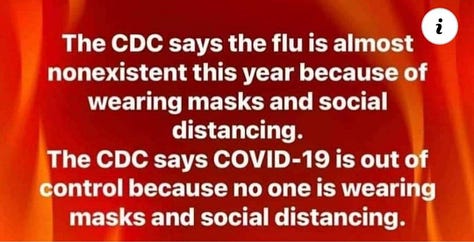
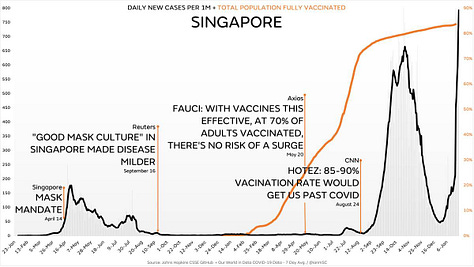


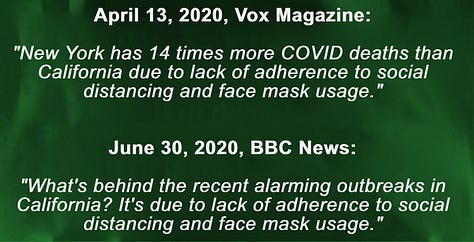
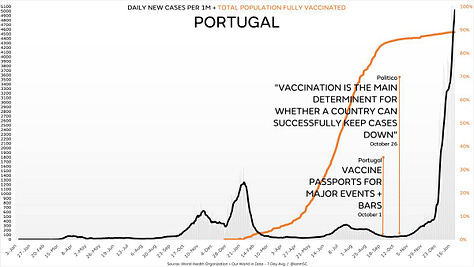

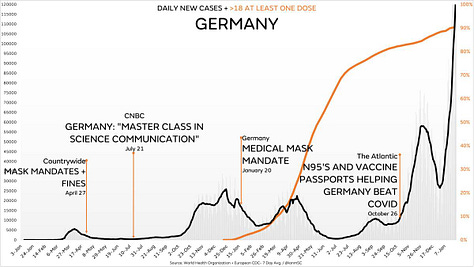

Beyond Medicine Into A Pervasive Social Pattern
This phenomenon extends far beyond healthcare—it has infiltrated every system of social and political life. We now inhabit a society constructed on contradictions and inconsistencies, creating shifting sands to evade accountability.
Whether in economic policy, international relations, education, or environmental management—every field exhibits the same pattern of contradictory claims serving as shields against criticism and responsibility. When political leaders make opposing statements about the same issue, or economic experts present data justifying contradictory policies, they employ the exact tactics we've observed in medical contexts.
A healthy society cannot function on circular logic and contradictory assertions. When deception and inconsistency become normalized, social trust erodes, undermining our capacity to build stable and functional social systems.
Germ theory represents not merely a problematic scientific paradigm, but a symptom of a deeper social dysfunction—our willingness to accept contradictions and inconsistencies as integral components of public discourse, provided they serve self-interest.
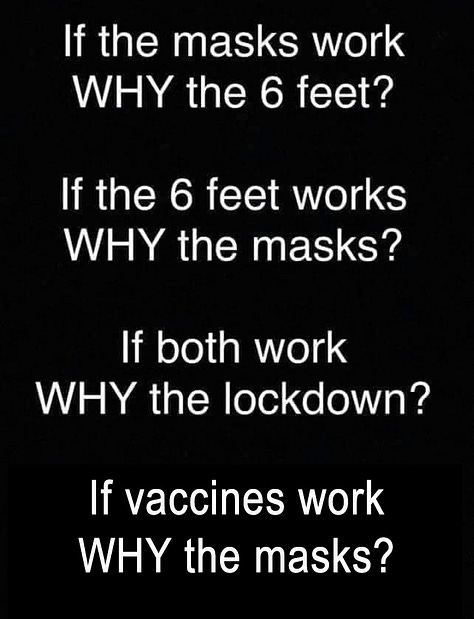


Learned Helplessness: The Social Implications of External Causation
Germ Theory spawns "learned helplessness"—a collective mindset where citizens believe they cannot take responsibility for their health and place it in the hands of others, creating a degrading co-dependency.
Germ Theory fits human nature. Ever ready to avoid responsibility and place causation outside himself, the individual readily embraces an easy scapegoat in the “bad” little organisms that “flew” about and “attacked” him.
When people place causation outside themselves, they create vast armies of “attackers” and “defenders”, “assailants” and “protectors” in their mental faculties, that then become entrenched belief systems, guiding their actions. In disease causation, the "defenders" become vaccines, medications, masks, and medical protocols—along with their administrators, medical practitioners.
This framework creates limitless opportunities for both commercial and psychological exploitation. Under such predicament, consumers automatically surrender both personal responsibility and financial resources in exchange for promised protection.
From Seeking Truth to Commercializing Fear
Contrary to popular belief, however, fear has never been the problem. We have an unhealthy relationship with fear, but in essence fear is essential. Without fear, there is no potential for the continued development of intelligence. Fear is a "switch" upon which intelligence is honed.
The important question is: what fears are we holding onto, that are conducive to the development of our intelligence, and what fears are we letting go of that do not serve us anymore?
In the mind, fear manifests as anxiety and worry that drive us to ask questions, and connect these questions with answers. “Why does the rain fall and not rise? Will it rain tomorrow too? Why not? Why yes? Will the tiger come to attack me? Under what conditions and circumstances does it attack?” And so on and so forth.
But providing an answer is not enough. In fact, even when we find an answer to our own questions, we don’t always feel secure. After all, what’s the main characteristic of the mind? Is that it’s an answer "machine gun”. For every question, there are dozens of answers. But that doesn’t mean that any of them reflect reality.
So, to find some relief, we are driven to keep examining and sorting which of the answers is the most concrete. That is, which answer represents a consistent pattern. If everything around us is built on patterns, and those patterns move in cycles, it means that behind every observed phenomenon there is a consistent pattern. The more we can identify the consistent pattern, the more we get a sense of certainty and security because we can anticipate. That’s the goal.
All this serves our collective need for the comforting illusion that the future is secure. Nothing handicaps humanity more profoundly than uncertainty about the future. As a species, we need this illusion to function—it's fundamental to our nature.
This, by the way, represents the simplest definition of science: a collection of answers, expressed as formulas, that reflect consistent patterns across different domains of existence, that enable us to feel secure because we can anticipate what would come next. They serve as mitigation of fears across human history, and the intelligence derived from them.
Today, I don’t need to fear a tiger attacking me when I leave my home, along with about 95% of the human population. The fear is still concrete and valid, but we long ago put it in its place when we understood under what patterns, as conditions and circumstances, it attacks and when it does not. We left that fear behind and moved forward when we discovered fire and began using it, and later, when we developed sophisticated weapons and safe structures to protect us. This is precisely the mechanism that drives the continual development of intelligence: the ability to put fears in their place and move on to the next ones.
However, if we all keep worrying about tigers in our cities, and people around us keep saying, "Every time you leave home, check under your car and around street corners for tigers," then as society we’re in real trouble. We’re in trouble because we’re ultimately conditioned to devote and spend enormous amounts of energy trying to reduce baseless fears, at the expense of those that are.
The incessant holding onto unsubstantiated fears inadvertently robs the vital force of the human body. And it’s the loss of vital force that renders a state of dis-ease to begin with. Holding onto unregulated fear drives humanity to embrace unrealistic and dehumanizing protective measures that ultimately exacerbate disease. This is the core of our dilemma.
The evidence is in the pudding: Over the past 150 years of mechanistic medical science, as our species has advanced industrially and technologically, we've merely substituted high rates of fatal infectious diseases with an epidemic of chronic, neurological and autoimmune conditions, alongside exponential increases in cancer and mental illness. The uncomfortable reality is that we haven't necessarily become healthier or conquered disease.
What we've achieved is a massive expansion of technical terminology and taxonomies that organize symptoms—surface manifestations—accompanied by technologies focused on managing these symptoms rather than preventing their causes. Together, these have created a veneer of "medical progress."
The United States generates 64-78% of global pharmaceutical profits despite comprising only 4% of world population, while simultaneously leading developed nations in chronic disease rates and lagging in life expectancy. This contradiction exposes fundamental flaws in our current health paradigm.
One of the greatest illusions supporting germ theory is the claim that modern medicine significantly extended life expectancy. Careful examination of historical data reveals a different reality: dramatic decreases in mortality from infectious diseases like tuberculosis, smallpox, and diphtheria largely occurred before the introduction of vaccines or antibiotics.
The most significant factor in public health improvement was the development of sanitation infrastructure, modern sewage systems, clean water access, and improved living conditions and nutrition. Researcher Thomas McKeown demonstrated that approximately 90% of infectious disease mortality reduction occurred before widespread implementation of modern medical treatments.
The interventions that saved millions weren't germ-targeted medications but fundamental improvements in public hygiene, clean water access, and nutritious food—interventions aligned more closely with Béchamp's "terrain" approach than Pasteur's germ theory. The medicalization of public health obscures the simple fact that environment, not germs, remains the primary determinant of population health.
The Theft of Vital Energy
The enormous energy expended on unrealistic fears depletes society's vital resources and transfers power to those whose existence depends on control, influence (politics), and profit—not health. This relationship becomes parasitic, gradually eroding social vitality.
Each time we encounter statements like: "Listeria causes food poisoning" "E. coli threatens your health" "Salmonella can be lethal" "Beware of flesh-eating bacteria" "Viruses jump between people, surviving 72 hours on surfaces before infecting you" or "The new coronavirus variant from China has reached our country"
Please understand that the constant repetition of such messages reinforces unfounded fears, facilitating the depletion of vital energy from society. Living under a perpetual cloud of invisible, intangible threats while simultaneously abandoning personal responsibility creates the ultimate engine for behavioral engineering and profit generation. This mechanism allows authorities to adjust the "fear dial" at will, thereby controlling collective behavior.
When I control the fear dial, I can easily convince you that "your illness is the result of the other" and engineer hatred toward anybody different than you without hindrance. Most troubling is that we don't recognize this engineering—it seems self-evident and natural. That is because under the spellbinding control of fear, our mind shuts down in favor to the reptilian brain within us that deals only with fight-or-flight survival mode. It is in that mode where humans turn worse than animals.


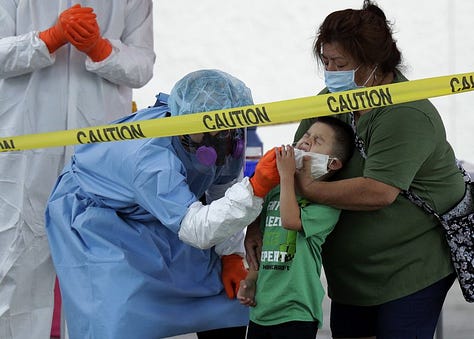




The Biological Weapon Illusion: Fear Without Foundation
Among the most damaging consequences for human society is the holding onto unfounded fear of biological weapons and engineered pandemics. This fear perfectly exemplifies how flawed science can generates genuine anxiety, and in that continue its unabated commercial exploitation.
While laboratories worldwide indeed engage in viral and bacterial "engineering," the assumption that such work could create effective epidemics ignores a fundamental problem: the paradigm itself—germ theory—upon which these studies are based, is fundamentally flawed. Viral and bacterial contagion is a lie, precisely because these microscopic particles are not strategic. It is a convenient lie nonetheless because it is based on society’s diminished ability to re-examined entrenched beliefs.
Scientists working on "biological weapons" aren't necessarily charlatans orchestrating sophisticated funding schemes, knowing that this endeavor is not applicable. Oh no, on the contrary. They themselves are products of the paradigm. They are "artifacts" of their training and conditioning. They genuinely believe in the concept instilled in them—that engineered microscopic particles, dispersed through air, can cause mass disease. These scientists, in their naivety, ride this wave of false perception to sustain what amounts to a parasitic existence within the system.
The profound irony is that our fear of biological weapons—in which we invest billions in vain for defense—prevents us from properly understanding the true determinants of disease and contagion. We commit enormous resources to defend against dramatically unfounded dangers, while the genuine threats to our health, many produced by the very system claiming to protect us, continue unchallenged and unaddressed.
Beyond the Lab Leak: Deconstructing a Modern Myth
The COVID-19 lab leak hypothesis has gained significant traction recently, gradually becoming a prevailing narrative in discussions about the pandemic's origins. However, to understand this phenomenon, we must dissect it and examine why such explanations, despite their flaws, can take root in modern society.
Extreme Sterility: When Cleanliness Becomes Fear of Life
Perhaps the most profound consequence of our adherence to germ theory is the emergence of a sterility consciousness: a worldview that elevates the absence of life as the ideal of health.
This troubling paradox represents a fundamental cultural shift: instead of recognizing nature as a source of vitality and resilience, we have cultivated a profound fear of everything natural, living, and unsterilized.
The images of medical teams in full protective gear—suits, masks, shields, and multiple protective layers, as witnessed during the COVID pandemic, represent more than mere medical precaution. They symbolize our deep disconnection from our humanness. The disturbing footage from hospital isolation wards—medical teams in protective suits treating patients as dangerous infection sources rather than human beings needing compassion and touch—testifies to this profound disconnection.
When caregivers are encased from head to toe in plastic and synthetic fabrics, what meaningful human connection can exist between caregiver and patient? The face of the doctor or nurse—the smile, the reassuring glance, the human expressions—all vanish behind protective barriers, leaving patients facing what amount to "robots" in sterile clothing.
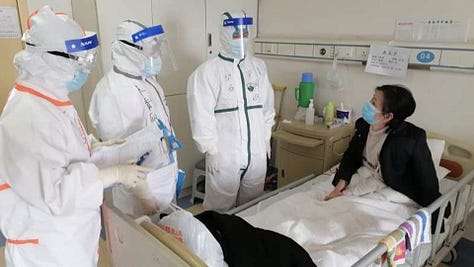
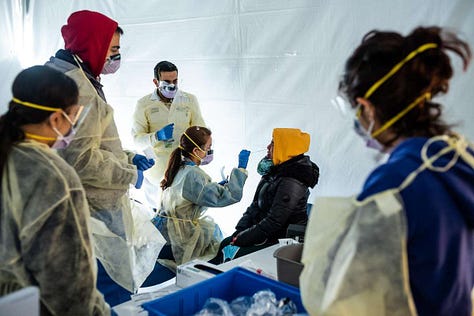
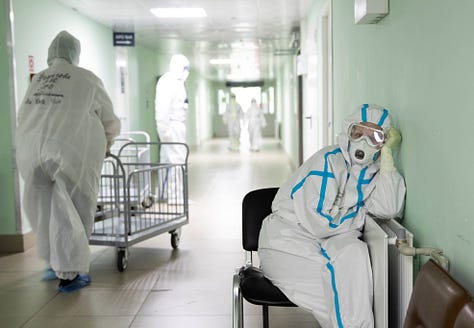
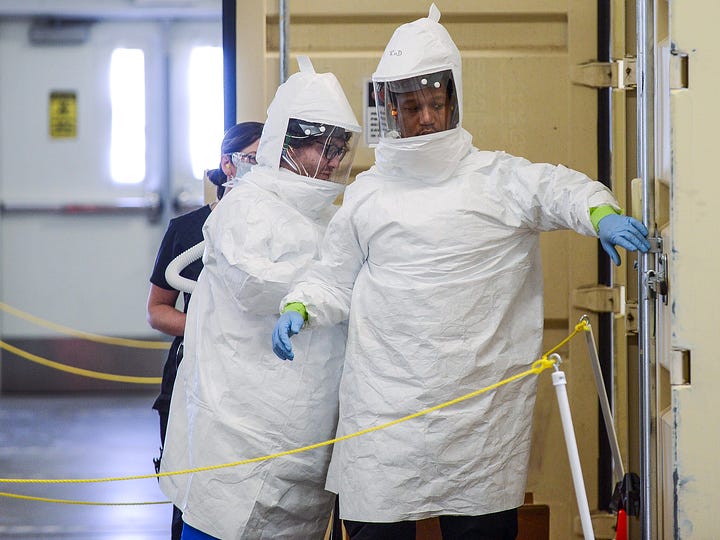

Yet, this mindset has permeated all aspects of life.
No setting better reflects this cognitive revolution than the modern kitchen. Throughout thousands of years of human history, food preparation was an intimate act of connection; human hands kneaded dough, processed meat, and engaged in cooking as an act of human creation. Today, the modern chef wears black latex gloves—a disturbing yet accurate symbol of our sterilization obsession.
These black gloves, now standard in restaurants and commercial kitchens, are not merely safety accessories. They represent a physical and psychological barrier between people and the food they prepare. They powerfully symbolize the prevailing belief that human touch is inherently contaminating and dangerous, and that only synthetic barriers can ensure "safety."
From Physical Sterility to Emotional Sterility
It doesn’t end there. The implications of sterility consciousness extend far beyond the kitchen. In our social lives, we have developed an increasing fear of human touch.
While the COVID pandemic accelerated and intensified these trends, they existed long before—direct products of decades of microbial fear marketing by the cleaning, pharmaceutical, and medical industries. We disinfect our hands dozens of times daily, fear public surfaces, and treat others as potential contamination sources.
Paradoxically, as we've become increasingly sterile, human health has generally deteriorated. There’s a direct link between overly sterile childhood environments and increased allergies, asthma, and autoimmune conditions.
The depth of sterility consciousness' impact reveals a disturbing human arrogance. Unconsciously, we've adopted the position that we know better than nature. We assume cleanliness means the complete absence of microscopic life, rather than a healthy balance within complex living systems.







Even more disturbing are images of children learning behind plastic partitions, isolated from peers, wearing masks, and separated from teachers by protective barriers. What does a child learn when implicitly told that others—classmates and teachers—primarily represent potential danger? What social psychology are we cultivating when teaching the next generation that the "right" way to exist is behind barriers?
Beyond damaging our humanity, this behavior reveals the loss of logic and common sense pervading society. There is no rational basis for believing that plastic suits, masks, or plexiglass partitions provide significant protection. The blind faith in these measures testifies to two disturbing phenomena: the disappearance of personal critical thinking from modern society, and the depth of fear instilled within it.
In "Cancer as a Turning Point," psychologist Lawrence LeShan documents how cancer patients who unquestioningly followed medical directives often weakened, declined further, and lost their will to live despite strict protocol adherence. Conversely, those who challenged their doctors—becoming demanding, irritable, or uncooperative from the medical perspective—frequently experienced remission.
Taking psychological and emotional responsibility for their condition corresponded with enhanced immune response and healing. The act of questioning authority itself created positive shifts in outlook, immune function, and energy flow. In essence, they reclaimed their lives by reclaiming their agency.
Sterility as a Form of Death
At its core, sterility represents a form of death. A sterile environment is, by definition, devoid of life: a state contradicting the fundamental nature of the living world. In our quest for absolute microbial "safety," we create environments essentially opposed to life itself.
The alcohol-based sanitizers that have become routine are, in fact, toxins designed to kill every form of microscopic life, making no distinction between "beneficial" and "harmful." Every act of disinfection is, essentially, an act of mass killing on a microscopic scale.
It's important to clarify: this is not a call for uncleanliness. On the contrary, true cleanliness remains a vital value (cleanliness is holiness). But we've tragically confused cleanliness with sterility. True cleanliness supports the balance of life and death; sterility negates it entirely, and in that creates conditions for death to flourish.
The Split in Modern Consciousness
Germ theory has created a profound schism in human consciousness, perhaps illustrating our splintered personalities. On one hand, we claim to love nature, promote sustainability, and consider ourselves part of the ecological fabric; on the other, we live in constant fear of nature itself, attempting to distance ourselves from the natural world through layers of synthetic protection.
This split manifests in everyday contradictions: we purchase organic food but disinfect it with harsh chemicals; we speak of connecting with the earth but fear walking barefoot on actual soil; we long for human connection but recoil from physical touch. It expresses itself within us—in the fragmentation of personality and the enormous disconnection of society from itself.
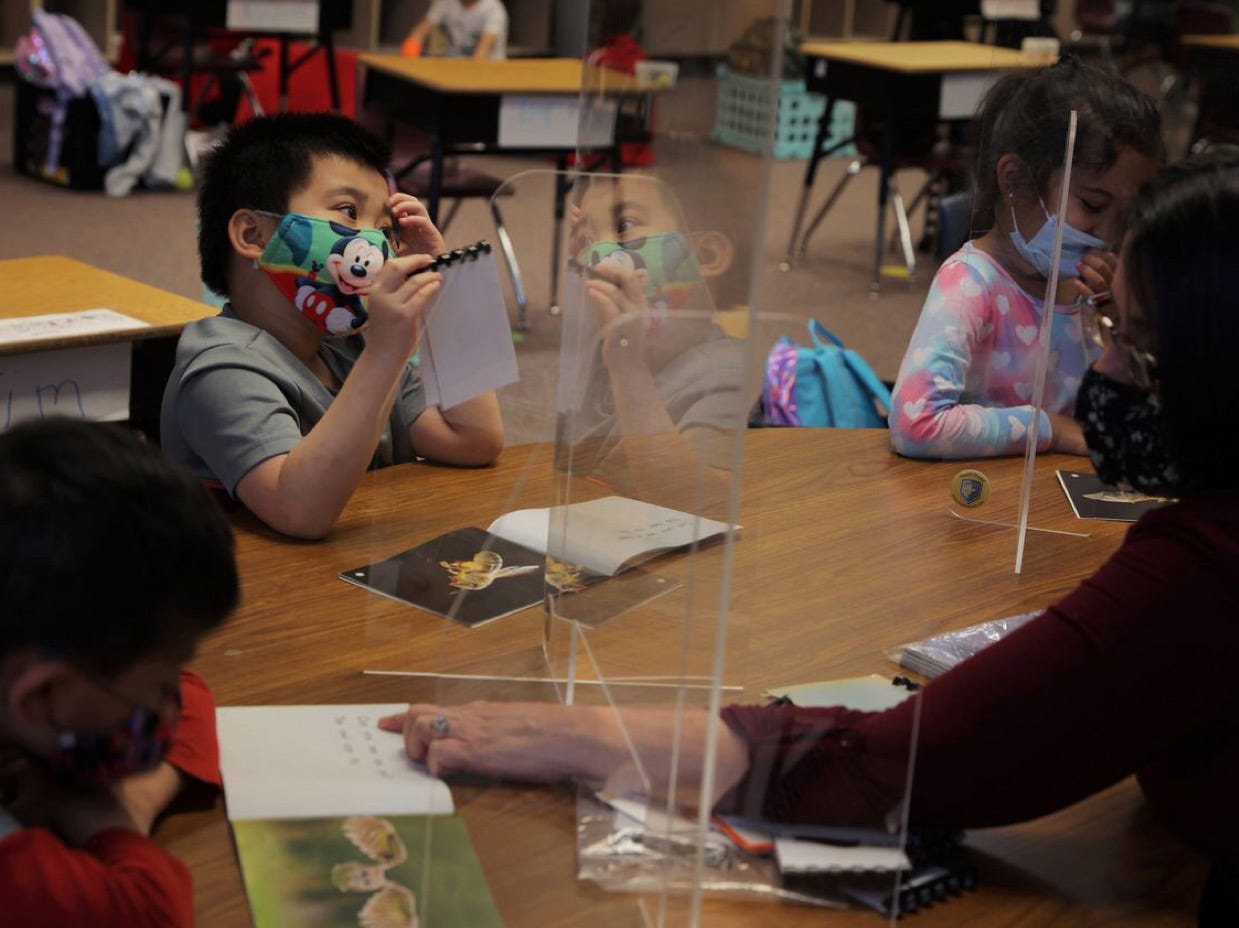
Our Broken Relationship with Life's End
Perhaps nowhere is this split consciousness more profoundly expressed than in our collective relationship with mortality itself. The same paradigm that transformed microbes into enemies has fundamentally altered humanity's age-old understanding of the cycle of life and death.
Throughout history, across diverse cultures and traditions, death was understood as an integral part of life's continuum—not an enemy to be conquered but a transition to be respected. The germ theory paradigm, with its militaristic framework of "battling" microscopic invaders, has recast death as the ultimate defeat rather than a natural completion. This fear, combined with the obsession to prevent death at any cost, has paradoxically created perfect conditions for the occurrence of pain, suffering, and ultimately death.
The reductionist scientific mindset, which isolates the body into separate, disconnected parts, measures medical success in purely numerical terms—how many deaths prevented, how many "lives saved." This metric completely ignores quality of life and the ongoing suffering of those who have become "statistical survivors"—people living the remainder of their lives with chronic illnesses, disabilities, and pain resulting from the treatments themselves. This pattern was starkly evident throughout the Covid-19 pandemic.
Seeing the body as a mechanical system that needs "fixing" rather than an organic whole that needs nurturing has led to a healthcare system that sanctifies life extension even when quality of life diminishes to mere suffering. However, extending life must come together with quality of life—these are two sides of the same coin, inseparably linked. When we separate them and pursue only quantitative life extension, we create a profound distortion in medical practice.
The fear underlying germ theory has transformed death itself into a taboo, an enemy to be fought at all costs. Yet in our desperate attempt to avoid death, we have created a reality where people die in isolation, without the presence of loved ones, without healing human touch. The sterility paradigm has not only prevented physical contact but has undermined the basic need for human connection in the moments of death—a need recognized in all human cultures throughout history.
Reductionist Science: The Limits of Closed Systems
This pattern of finding individual culprits for complex phenomena extends beyond epidemiology to other areas of scientific inquiry.
Modern climate science has fixated on CO2 emissions as the main factor for environmental change. This represents another victory of reductionist thinking over holistic understanding. The mind's need for simple, linear and measurable culprits leads to the paradoxical situation where we blame a basic molecule essential to life itself - the same compound that plants need for photosynthesis and oxygen production.
The irony abounds: in our journey to 'save' the environment, we have labeled one of its essential building blocks as harmful. Just as we blamed bacteria and viruses for all our ailments, the very building blocks of life, so we separate and blame individual factors for all our ecological problems.
In both cases, our mental need for simple categorization blinds us to the complex and connected nature of biological systems. Just as germ theory reduces diseases to the action of specific microorganisms while ignoring terrain and context, modern climate science focuses on single metrics while ignoring the complex dance of Earth's systems.
When reality doesn't match the model, instead of changing the model or becoming illuminated, we apply more force, distort our perception, and ultimately subtract from the ground reality through aggressive interventions. Just as in germ theory, this process makes the "cure" much more painful and dangerous than the "disease."
This reflects our wider disconnection from natural processes - we have become so disconnected from basic biological understanding that we can no longer seriously consider paradigms that embrace basic life processes.
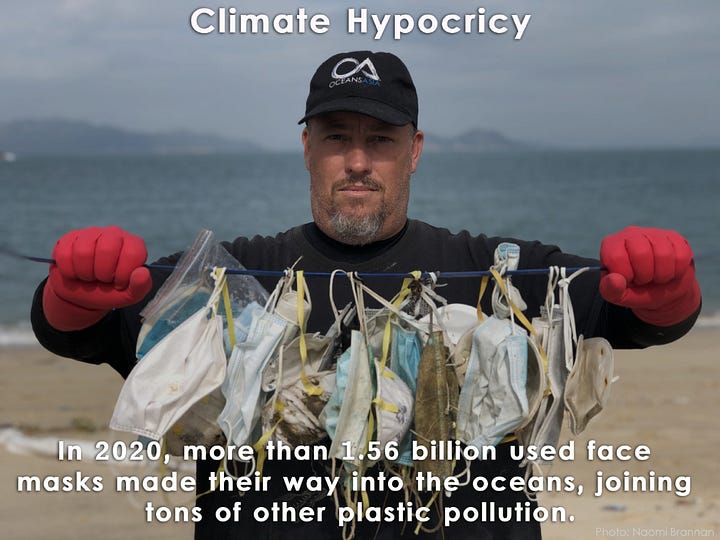

Conclusions:
Scientism: The World's Largest Religion
An in-depth examination of germ theory and the cognitive evolution behind it reveals that modern science, born as a rational alternative to religious dogmatism, has undergone a worrying metamorphosis and itself become a religious dogma par excellence.
"Scientism" has replaced true inquiry.
Upon deeper examination, the similarity between scientism and institutional religion is striking in its power. Just as traditional religion was built around God - an invisible, partially-defined, and infinitely anthropomorphized entity - so scientism is based on invisible entities (to the naked eye) that are partially defined and infinitely anthropomorphized as mediators of "fate."
The power of both concepts - God and the germ - stems from exactly the same characteristic: their invisibility, allowing infinite interpretative flexibility for purposes of control, influence, and commerce.
The great irony is that what began as a rebellion against religious dogmatism in the Age of Enlightenment has itself become a rigid dogma that silences challenging voices and blocks the true advancement of human knowledge. Like institutionalized religion, science, especially in the field of medicine, no longer acts as a seeker of consistent patterns to reduce fear, but has become a huge business system that exists precisely on the cultivation and perpetuation of (unfounded) fears.
The current scientific-medical paradigm, which was supposed to free us from fear, has created exactly the opposite reality: a society flooded with health anxieties, dependent on medical products, and disconnected from the natural wisdom of the body. This is a profound corruption of one of humanity's most important tools for advancement, and another expression of our fragmented consciousness - a consciousness that sees itself as the absolute iteration of reality, thereby completely distorting our understanding of nature.
The power of this new paradigm lies in its unprecedented reach across social boundaries. Unlike traditional belief systems, it has permeated all strata of society, binding together the most unlikely adherents—from staunch atheists to devout religious believers—into what has effectively become the world's largest institutionalized religion. This universal adoption grants it extraordinary influence, making it nearly invisible as a belief system precisely because it has become the water in which we all swim.
The Inability to Shake Dust: Examining Old Concepts
The uncomfortable reality is that even when we are able to understand and logically accept the invalidity of the germ paradigm, the transition from theoretical understanding to practical change encounters an almost insurmountable wall. It is not enough to free us from its grip.
After 150 years of constant repetition, backed by patterns of thought, belief, and behavior, germ theory has become deeply embedded in our cellular memory. It forms our automatic responses and in the way we interpret reality at the unconscious level.
This is the true power of paradigms - they operate far beyond the cognitive level. Even when the conscious mind identifies the contradictions and failures, the body and deep consciousness continue to operate according to familiar patterns. This is perhaps the greatest paradox characterizing our time: the critical knowledge exists, but the required action seems impossible.
Complexity and Interdependent Automation
Moreover, unprecedented complexity of modern society prevents this dissolution. Modern life is a complex web of concepts, technologies, and systems that have evolved on top of each other over generations, until an enormous mutual dependence has been created. We have reached a critical point where challenging one basic assumption - like germ theory - threatens to topple an entire house of cards of professions, investments, institutions, and social structures built around it.
This dilemma parallels the state of the world economy today: do we continue with the problematic patterns we have created (printing currency; borrowing into “prosperity” by robbing the future wealth of society) despite understanding the long-term damage they cause, or do we undergo a painful process of resetting? The "cure" for the problem - a real paradigm shift - is perceived as more severe than the disease itself.
This is the great trap of our time: the critical knowledge and evidence undermining the germ paradigm exist, but the social and economic cost of fundamental change seems unbearable. We are pushed forward in the automatic flow of preserving wrong concepts - not because of an external threat like a virus, but because of our systemic inability to stop, re-examine, and change direction.
The Health Monopoly: Beyond Conventional Boundaries
While we've examined how Germ Theory has shaped conventional medicine and social structures, its influence extends far beyond these obvious domains. To truly understand the depth of this conditioning, we must look at how the same fundamental distortions appear even in supposedly opposing systems.
The fragmented consciousness it both reflects and reinforces has produced our current distorted reality—a 'patch-over' consciousness that extends far beyond conventional medicine into every health domain.
Both mainstream pharmaceuticals and their supposed counterparts—the multi-trillion-dollar vitamin, supplement, and 'holistic' industries—operate on the identical fragmented paradigm despite their apparent opposition. They share the same fundamental approach: treating symptoms rather than addressing root causes, creating dependencies rather than empowerment.
Both systems capitalize on the same fundamental disconnection: the individual's belief that health exists outside themselves, requiring external solutions imposed by increasingly abstracted theoretical frameworks. In both realms, the human being is positioned as fundamentally deficient, requiring perpetual correction through purchased products. This conditioning creates the ideal consumer across all health markets: perpetually dependent, increasingly helpless, and thoroughly divorced from personal responsibility for their wellbeing.
As a result, our relationship with health has become thoroughly distorted. The exponential growth in medical interventions, drugs, supplements, and wellness products doesn't indicate progress but rather mirrors religious amulets—objects we cling to in hopes of neutralizing our growing anxiety and fear.
The systems and their subjects reinforce each other in a perfect cycle of exploitation—commercial interests cultivating dependency while the dependent public demands ever more interventions, regardless of whether these come from pharmaceutical companies or natural health stores.
The Blind Spot in Health Freedom Advocacy
Perhaps the most revealing demonstration of how deeply entrenched this paradigm has become lies not in examining its proponents, but in scrutinizing those who claim to oppose its main derivative: the commercial juggernaut of the medical-industrial complex. If we truly seek to transcend a flawed paradigm, we must be willing to examine how it may continue operating even within movements dedicated to challenging it.
To understand how deeply this paradigm has embedded itself in our cellular memory, we need only look at precisely those voices who have become the most critical of modern medical interventions. The medical freedom movement, in all its various forms, unwittingly perpetuates the very paradigm it aims to challenge. Even as they oppose the mainstream narrative, their language, concepts, and approach remain fundamentally rooted in the same fragmented thinking—within the fundamental confines of germ theory.
Consider how frequently these advocates identify the "spike protein" as the villain in their alternative narratives. Despite rejecting conventional explanations, they maintain the same reductionist approach—dividing biological phenomena into "good" versus "evil" components within non-sentient and non-strategic microscopic entities. The language changes, but the underlying fragmented worldview remains intact.
This pattern extends beyond specific biological theories. By consistently redirecting blame toward institutions and external forces, many health freedom voices inadvertently reinforce a mindset of external causation rather than promoting true paradigm shift. Their explanations, while appealing to those seeking alternatives, often stir emotional victimhood that inevitably attracts more abuse, rather than encouraging examination of the belief system itself.
What often begins as genuine inquiry frequently devolves into emotional leveraging that serves primarily to maintain influence and, in many cases, lucrative platforms and careers. This represents a significant deviation from authentic scientific inquiry and the pursuit of holistic understanding. This approach doesn't provide liberation by releasing unsubstantiated fears—it enforces bondage by furthering those very fears.
Final Words
The Loss of Direct Perception in Modern Society
Germ Theory is not merely an erroneous scientific concept—it's a symptom of human consciousness that has lost its way.
Today, we inhabit a consciousness that perceives disease, health, and the body as battlegrounds rather than expressions of a living whole. This paradigm persists because it perfectly mirrors the fractured worldview embedded within modern society, creating a self-reinforcing cycle: our fragmented consciousness makes reductionist science possible, while this science further fragments our understanding.
When we examine what has happened to us over the last two centuries—the massive development of technology, computers, and now smartphones and artificial intelligence—these innovations actually serve as substitutes for the slow dissolution of our spiritual connection and the loss of our direct sensory perception of the world.
In modern society, from childhood, we teach children not to trust their own perceptions and experiences in favor of expert opinions and institutional "wisdom." The result is a population with diminishing critical thinking, seeking external validation for what they already intuitively know.
This pattern of rejecting direct experience in favor of theoretical knowledge repeats across all our institutional systems: schools that value standardized tests over genuine learning, governments that prioritize economic models over human suffering, urban planners who see cities as simulations rather than living communities.
We've created a society that is simultaneously more educated yet less capable of practical wisdom than ever before. We've developed a culture that devalues personal experience, resulting in a special form of learned helplessness.
As human consciousness lost its ability to perceive wholeness, it became increasingly dependent on technological tools to "see" reality and those operating these technologies as authorities. We're now trapped in the illusion that information access equals wisdom. Thus, technology has become an artificial "filler" for the loss of experiential understanding. We're now trapped in the illusion that because we have computers to rely on, bringing us every piece of information we need in a fraction of a second, we possess knowledge.
But reality shows the opposite. The modern scientist has largely become a theoretician disconnected from the real world, operating in a system that rewards complexity and technical language over practical knowledge. This is particularly evident in healthcare, where physicians increasingly function as technicians interpreting machines rather than practitioners with intuitive diagnostic abilities. We pour millions into "cutting-edge" studies only to rediscover what our ancestors understood intuitively—then proudly call this "scientific progress."
The models we've developed have become so complex and detached that they function more as sophisticated fantasies, hypnotizing us with theoretical possibilities while ignoring practical realities. This arrogant fragmentation forcefully imposes disconnected models on living reality. In doing that, we actually further our undoing. The tragic result: our means of fighting diseases often function as sophisticated placebos—creating an illusion of control rather than effectively addressing phenomena.
Technology itself isn't the culprit—it's our loss of the human element juxtaposed with technological advancement that creates today's cold, transhumanistic perspective. We continue neglecting human connection while advancing technology precisely devoid of that essential component.
Rather than returning to basics and examining phenomena directly, we're trapped in complicated paradigms saturated with anthropomorphic metaphors that compensate for inconsistencies in our sterile models. The truth remains that all natural phenomena are, at their core, simple. Everything real can—and should—be explained in clear, direct language. Excessive complexity often merely masks misunderstanding.
The Mirror of Responsibility: Creating Our Reality
This exploration goes far beyond identifying scientific error—it reveals how our own beliefs, combined with the profound loss of personal agency and self-responsibility, have created a society defined by learned helplessness.
Everything we see in the world today reflects such relinquishment. Nothing exists in isolation. In this environment, we inevitably manifest matching patterns in our symbols of authority: our leadership, institutions, and their inherent dysfunction and disconnect.
A symbiotic relationship exists between oppressor and victim. Rather than being mutually exclusive opposites, they actually nourish each other in a self-perpetuating cycle. We unknowingly sustain this predicament through our thought patterns, emotional cycles, behavioral codes, and cultural beliefs. These operate autonomously, beneath our conscious awareness, maintaining the very systems we mistakenly believe are external to us.
Under this predicament, we adopt a binary worldview that attributes all our problems to external forces—the classic "us versus them" mentality. This perspective ensures our continued bondage precisely because it fails to cultivate the fundamental recognition that each individual is the true authority over their own life and existence.
When we point outward and blame systems, governments, or elites for our condition, we reinforce the very disconnection that created these imbalanced structures in the first place. True transformation begins with reclaiming one’s innate authority and acknowledging our role in creating the world we experience. Only then can we break the cycle of victimhood and control that has defined our collective experience for generations.
The solution begins with the individual reclaiming their direct connection to reality.
Individual Authority and the (narrow) Path Forward
The solution begins with the individual reclaiming their direct connection to reality—yet this path is available to remarkably few. Despite the clarity of this understanding, we face a sobering truth: even if this reading constitutes interest and illumination for many, it probably won't catalyze meaningful change for most. The majority will continue clinging to familiar patterns even when presented with irrefutable evidence of their falsehood. Habit, fear, and the comfort of remaining within established paradigms exert a gravitational pull that most cannot escape. This reality confirms how much the illusion of free choice is just that—an illusion and nothing more.
In recognizing this sobering truth, I harbor no delusions about a collective awakening. The paradigm shift I've described isn't arriving for humanity as a whole—it's emerging at the individual level. Only a minute percentage of us, through some combination of readiness, ability, and perhaps serendipitous fortune, will manage to break free from these entrenched patterns.
These few will reclaim their connection to themselves, liberating their consciousness from collective delusion, and in doing so, rediscover their innate self-agency and trust in the extraordinary intelligence rooted within their physical vessels. The path to freedom exists, but it remains a road less traveled—treaded not by many, but by the few who can overcome the gravitational pull of our shared paradigmatic prison.
For these awakened individuals, the path forward lies not in rejecting technology—which would be both impossible and unwise—but in fundamentally recalibrating their relationship with it. They will reclaim their human capacity for direct perception, critical thinking, and intuitive understanding, using these as the primary lens through which technological tools are employed and evaluated.
Only by restoring this balance can technology serve as an extension of human wisdom rather than its replacement. The revolution needed is not technological but perceptual—a return to trusting our direct experience while using technology as a tool that amplifies rather than substitutes for our innate capabilities.
Or as my rancher friend used to say:
"Who rides whom? Is it you riding the horse, or the horse riding you?"
The true challenge, therefore, extends beyond merely understanding the falsehood of Germ Theory. One must find ways to uproot its influence from the deepest layers of our own mental consciousness. This journey demands more than research and analysis—it requires a renewed connection to bodily awareness, direct experience of nature, and the ancient wisdom that preceded our modern scientific age.
Ultimately, one must recognize that life itself is not sterile. Life is complex, messy, and filled with microbial interactions. Embracing a more balanced approach—one that respects the complexity of life rather than fearing it—is key to overcoming one of Germ Theory's most harmful consequences: our fear of life itself.
Only through this reconnection might we begin to heal the profound split that has formed between humans and themselves, between humanity and nature, and between people and truth. In reclaiming this wholeness, we find not just scientific accuracy, but a path toward genuine healing at both personal and collective levels.
In the next installment of this series, we will shift from critique to reconstruction, exploring the true role of what conventional science calls "germs" from a holistic perspective. We'll examine how these microscopic entities function within nature's integrated systems and bodily intelligence, revealing patterns that align with insights from esoteric and theosophical traditions. Through this exploration, we'll discover how ancient wisdom and modern holistic understanding converge to offer a more coherent and comprehensive paradigm—one that honors the complexity of life rather than reducing it to a battleground of opposing forces.










